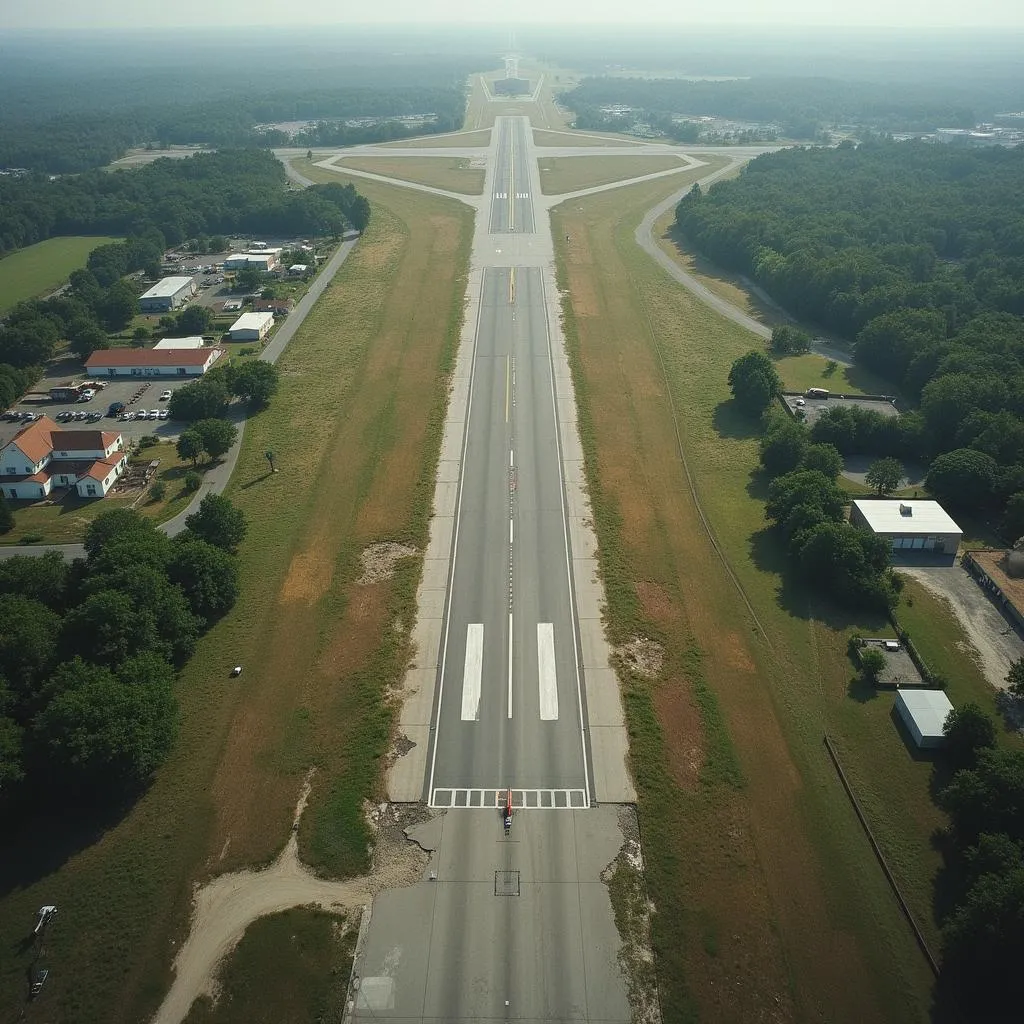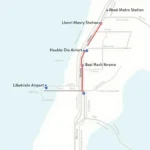The world of aviation is vast and complex, encompassing a wide range of infrastructure, from bustling international airports to smaller, more specialized facilities. While many airports and helipads see frequent use, there’s a surprising number that remain unserved, presenting unique opportunities and challenges within the industry. This article delves into the intriguing realm of 56 Unserved Airports And 31 Unserved Helipads, exploring the reasons behind their status and the potential they hold.
 Aerial view of an unserved airport with a single runway and minimal infrastructure.
Aerial view of an unserved airport with a single runway and minimal infrastructure.
Understanding Unserved Aviation Facilities
An unserved airport or helipad is essentially a facility that lacks scheduled commercial air service. This means airlines don’t operate regular flights to or from these locations. Similarly, unserved helipads don’t have scheduled helicopter services. But why do these facilities exist if they aren’t actively used for commercial purposes?
Reasons for Unserved Status
The reasons for an airport or helipad being unserved are diverse, often stemming from a combination of factors:
- Location: Remoteness or proximity to major airports can impact demand for scheduled services.
- Economic Viability: Operating costs for airlines and helicopter services might outweigh potential revenue in certain locations.
- Infrastructure Limitations: Runway length, navigational aids, and terminal facilities can restrict the types of aircraft an airport can accommodate.
- Demand Fluctuations: Seasonal tourism or economic shifts can lead to fluctuations in passenger demand, making scheduled services unsustainable.
 An unserved airport nestled amidst a remote mountainous landscape, with a small aircraft parked on the tarmac.
An unserved airport nestled amidst a remote mountainous landscape, with a small aircraft parked on the tarmac.
The Potential of Unserved Airports and Helipads
While the term “unserved” might imply these facilities are abandoned or without purpose, they often play vital roles within their respective regions:
General Aviation Hubs
Unserved airports and helipads frequently serve as hubs for general aviation activities, including:
- Private Aviation: Owners of private planes and helicopters use these facilities for personal travel and recreational flying.
- Flight Training: The less congested airspace around unserved airports makes them ideal for flight schools and pilot training.
- Emergency Medical Services: Helipads, in particular, are crucial for medical evacuations and transporting patients to hospitals, especially in remote areas.
Economic Drivers
Despite the lack of commercial service, unserved aviation facilities can contribute to local economies:
- Tourism and Recreation: They provide access for tourists interested in flying, skydiving, or other aviation-related activities.
- Business and Industry: Companies might utilize private aircraft for transportation to remote work sites or for executive travel.
- Aerial Firefighting and Forestry: These facilities are essential for supporting firefighting efforts and managing forests.
 A group of people boarding a small plane at an unserved airport, with luggage being loaded and a pilot conducting pre-flight checks.
A group of people boarding a small plane at an unserved airport, with luggage being loaded and a pilot conducting pre-flight checks.
Challenges and Considerations
Despite their potential, unserved airports and helipads face several challenges:
- Maintenance Costs: Maintaining runways, navigational aids, and other infrastructure can be costly, especially without revenue from commercial operations.
- Safety and Security: Ensuring the safety and security of these facilities can be challenging with limited resources.
- Regulatory Compliance: Meeting aviation regulations and standards is essential, even for unserved facilities.
The Future of Unserved Aviation Facilities
The future of the 56 unserved airports and 31 unserved helipads is uncertain, but several factors suggest potential for evolution:
- Technological Advancements: The rise of electric aircraft and autonomous flight technologies could make smaller, unserved airports more viable for short-haul flights.
- Changing Travel Patterns: As travelers seek less crowded and more personalized experiences, the demand for private aviation and access to remote locations could increase.
- Government Support: Government funding and incentives can play a crucial role in maintaining and improving unserved aviation facilities.
Conclusion
The world of 56 unserved airports and 31 unserved helipads offers a glimpse into a fascinating aspect of aviation. While not bustling with commercial activity, these facilities serve important purposes within their communities, supporting general aviation, driving local economies, and providing essential services. As technology advances and travel preferences evolve, the role of these unserved facilities may transform, potentially shaping the future of aviation in new and exciting ways.
FAQs
1. Can I land a private plane at an unserved airport?
Yes, unserved airports are often open to general aviation traffic, including private planes. However, it’s essential to check with the airport operator or local authorities for any specific rules or restrictions.
2. Are unserved airports safe?
While unserved airports might not have the same level of security as major commercial airports, they still adhere to safety regulations. Pilots are responsible for conducting pre-flight checks and ensuring safe operations.
3. Who is responsible for maintaining unserved airports?
Ownership and maintenance responsibilities for unserved airports vary. It could be a government entity, a private organization, or even an individual.
4. Can unserved airports become commercial airports in the future?
It’s possible but depends on various factors, including economic viability, infrastructure upgrades, and community support.
5. How can I find information about a specific unserved airport?
Aviation resources, such as online databases and aeronautical charts, can provide information about unserved airports, including their location, runway details, and communication frequencies.
Need More Information?
Contact our aviation experts at AirPort BBI for personalized assistance with all your aviation needs. Call us at +13089626264, email us at [email protected], or visit our office at 404 Bothwell St, Oxford, NE 68967, USA. Our dedicated team is available 24/7 to answer your questions and provide the support you need.

